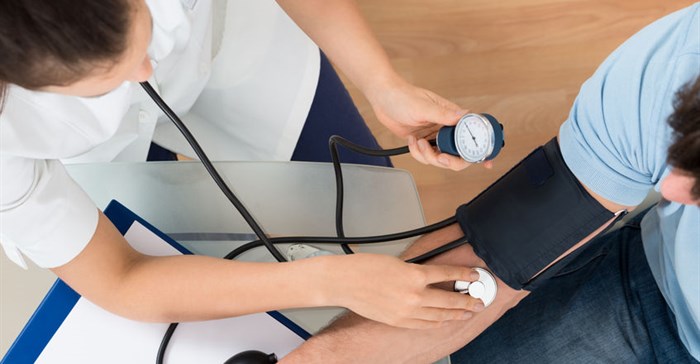Trending
Elections 2024
Jobs
- Audiologist Swellendam
- Head of Marketing Johannesburg
- Diagnostic Radiographer Cape Town
- Customer Service - UK - Work from Home Nationwide
How to keep a pulse on your health

Inspired by the World Health Organization’s World Health Day last month, here’s how to keep a finger on the pulse of your health:
Step 1
Once you’ve accepted the value of a regular medical check-up, put it in your family’s diary every year (ideally, at the beginning of the year).
According to Robinson (2016), check-ups detect the potential onset of specific diseases, finding problems before they start. By getting the right screenings and treatments, you’re improving your chances of a longer, healthier life.
What’s usually included? A basic health exam should include a detailed history, a review of systems, a social history, past medical history and family history, as well as “a good nose-to-toes exam”, and then age-appropriate screening and blood work, advises Dr Thomas Weida, a family physician with the Hershey Medical Center in Pennsylvania (CFAH, 2014).
Step 2
Know the top four screenings that are included in a medical check-up. There are four “key health indicators” according to Tanner Health Systems (2015), and knowing the results of these tests – cholesterol, glucose, blood pressure and Body Mass Index – can help you improve your general health, control or prevent diabetes, avoid heart disease and preclude certain cancers.
If your numbers are not at the target level, you can work with your healthcare provider to develop a practical, realistic plan to reach these goals.
Step 3
Get tested. Once you get your results, understand what they mean.
Cholesterol
Cholesterol is a waxy substance found in all cells of the body and some foods. It produces hormones, vitamin D, and substances that aid in digestion.
Low-density lipoprotein (LDL) or ‘bad cholesterol’ is the main source of cholesterol build-up in the arteries. The higher your LDL, the greater your chance of developing heart disease.
High-density lipoprotein (HDL) or ‘good cholesterol’ transports cholesterol from other parts of the body to the liver and helps keep cholesterol from building up in the arteries. HDL lowers the risk of developing heart disease. TC/HDL ratio is the relationship between total cholesterol and HDL - the lower the ratio, the lower the risk.
The Heart and Stroke Foundation South Africa (2016) recommends that your total cholesterol reading should be below 5mmol/l. The value for HDL should be greater than 1,2mmol/l and LDL should be less than 3mmol/l. A reading of over 7mmol/l suggests a need for immediate lifestyle changes and perhaps medication, so plan a visit to your healthcare provider.
Glucose
Throughout the day the pancreas produces insulin – the hormone that converts sugar, starches, and other foods into energy. Glucose is the main sugar in the blood, responsible for providing the energy needed to perform everyday activities. But when there are defects in the body’s ability to produce and/or use insulin, diabetes is a group of diseases that can result.
Normal blood glucose readings are between 3,3 and 6mmol/l, while fasting blood glucose (blood glucose measured before breakfast) of over 7.8mmol/l should give you reason for concern, says Health24 (2015). If you have a family history of diabetes, are overweight or obese, and have high blood pressure or elevated cholesterol, have your glucose tested.
Blood pressure
Blood pressure is the force of the blood against the walls of the arteries. Systolic pressure (the top number) is the highest pressure in the arteries, and diastolic pressure (the bottom number) is the lowest pressure.
Hypertension is when blood pressure stays elevated over time, often referred to as a ‘silent killer’ (AHA, 2014) as it typically has no symptoms. Pay close attention to your blood pressure, which is graded as follows (Health24, 2015):

A reading of over 130/85 means you should schedule a doctor’s visit.
Body Mass Index
Ideal body weight varies by gender, age, height, and frame. Body Mass Index (BMI) is a widely accepted indicator of whether you’re in a healthy range.
This is what the figures mean, says Shaw (quoted in WebMD, 2017):

Your BMI either needs to be 18.5-24.9 or it needs to be 25,0-29.9 with a waist circumference of under 94cm for males and under 80cm for females. Why waist circumference? This is linked with obesity-related diseases, for which people who carry fat around their midsection are at greater risk.
What’s the next step?
Visit your healthcare provider for a medical checkup. If you don’t have a regular health care provider, chat to a pharmacist, your medical scheme or a GP, so they can suggest the essential tests (Radhakrishnan, 2017). Later, if an ailment is detected, you can consult the relevant specialist.














